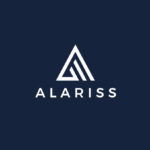Blog
7 Steps for Effective International Expansion Hiring During COVID

March 16, 2021
Establishing a business has always been a time-consuming experience; juggling between setting up business operations, implementing a go-to-market strategy, and hiring new talents is not easy and can be overwhelming.
Because of COVID, many companies from all industries had to adapt to new work methods and remotely manage teams; it is now the new norm.
However, even if we are now in the “future of work” era, we are still adapting, and certain practices are easier than others to implement.
Maintaining employee engagement, managing the workflow, etc., already were things that many companies struggled with while in-person, so now navigating those problems virtually is challenging.
But, this changing environment did not stop the need and the will of many companies to expand internationally. This now pushes companies to not only focus on the usual international expansion questions; they now must ask themselves, “How can we effectively hire during COVID?”

Despite many issues at first glance, COVID shifted the thinking of the masses; it opened a lot of doors for many companies that never thought about hiring internationally.
However, even if it has advantages, it is a process that requires time and attention and must be executed carefully to avoid any issues along the way.
Expanding in another country requires businesses to take their time, do critical thinking and implement a strong business development strategy. For that to work, companies need strong teams that can lead them to achieve their goals.
In normal times, having a good team is essential for any business, but now it is imperative. Indeed, to properly grow, whether it is locally or internationally, companies need to source skilful talents in a position that best suits their strengths and company culture.
This situation has many disadvantages, but we will help you navigate this uncertain situation and make the best of it by providing you with simple tips for you to adapt successfully to this new hiring environment.
The future of recruitment is shifting; as the economy begins to recover, it is normal for businesses to look for a new hire. This article will share 7 best practices for you to have effective international hiring during COVID.
1. Expand your talent pool
Because of the COVID downturn, companies must improve their hiring effort to ensure a good recruiting process.
The competition for top talent never stops; that is why companies are constantly looking for new candidates. Thankfully, COVID did not only have bad sides, but it also led companies to expand their opportunities in terms of recruitment.
Indeed, the advantage of being remote is that it offers companies a greater reach for candidates and, for talent, more job opportunities.
As a company, you can now source your talent pool from anywhere in the world. Hiring global talent is now made more accessible; companies can look in any country and pick the best candidates.
By expanding your talent pool, you are seen as a more flexible workplace in your potential employees’ eyes.
Especially in those times, employees require a flexible work environment.
According to Employment Hero, 45% of employees consider flexible work when considering a new job.
It shows that it is something that employees care about, so to maximize your chances to attract new talents, your company should follow this rule.
Flexibility has many advantages; for instance, it is proven to reduce the gender pay gap. It helps women adjust their family and work duties better and not miss certain opportunities.
Also, it pushes men to do the same, which helps equalize the pay gap and reduce the financial loss that women experienced due to their external responsibilities.
Besides, it helps with diversity in leadership positions; more women are C-level executives in remote companies.
A study by Remote.co notes, 28% of mostly or entirely remote companies have either women CEOs, founders, or presidents.
The difference between traditional brick-and-mortar companies is significant, and taking more flexible initiatives can lead to a better workplace altogether.
2. Choose your target market strategically
When going global, you need to think about any strategy that would negatively or positively affect your customers. If you choose carefully, you will assess the opportunities that are worth being taken into consideration.
Your concerns should focus on how you can stay relevant in your local market and your new target market.
Critical thinking is essential in these cases; you need to weigh up the pros and cons.
For instance, if you are a company wanting to expand your business globally, you should consider the scope of your target market(s), which one has the biggest revenue potential, and why. If you wish to sell in the US market, you should know which states are most likely to be part of your niche market to maximize your success chances.
First, you should look at your analytics and identify tendencies in demographics, channels, keywords, session time, etc.
Then, talk to your customers by conducting surveys, leverage insights from your sales teams; who are they closing deals with? What are the prospects’ and clients’ most asked questions?
Overall, establishing a strategy beforehand is crucial to avoiding surprises and entering your selected market the best way possible.
3. Assess your talent needs
Pay attention to your business operations. You need to take into consideration your company goals. It is required for you to assess your strengths, weaknesses, and opportunities.
When hiring new employees, it is important to know in which department talents are needed and where to properly position them to maximize their experience and reinforce your current teams.
Use data to leverage any organizational opportunities, look at how your current teams are performing, and look if there is a need for diversification or rebalancing with your career advancement opportunities, performance ratings, etc.
Conduct team assessments to evaluate your talents’ experience, skills, and knowledge; it can help you identify who your top and bottom performers are, which allows you to act accordingly by rewarding and providing feedback to your employees.
Also, now that we are evolving in this remote work environment, you can leverage different geographies’ comparative advantages. You do not need to limit yourself; you can now look for talents globally; hire sales representatives in the US, designers in Russia, back-end engineers in India, and front-end developers in Uruguay.
After effectively identifying your needs, you can now explore the joy of international hiring.
4. Create engaging content
In those times, attracting relevant candidates is of paramount importance; your company must find innovative ways to showcase its uniqueness to the public, creativity and resilience are needed.
Because employees are more conscious of what they want, you need to attract them via creative recruiting events; depending on your industry, you can organize hackathons, webinars and publicize relevant information about your industry and company using infographics for a faster understanding. Especially if you are an emerging company, those types of events can serve as promotion and bring light to your organization.
It is the moment to show another side of your company; it’s now time to leave the serious etiquette in the closet and show your fun.
5. Tailor your Employee Performance Metrics
Every company has its own metrics to evaluate its employees, but if you want to go global, you will need to make some changes in your employee performance metrics.
You should tailor it; you will need to establish consistent metrics for evaluating your candidates to avoid implicit biases; if you want to hire global talents cultural differences are something that you must take into account while establishing your performance metrics.
If you work with diverse teams from different cultures, you must adapt your current metrics evaluation criterion. You will need to research intercultural communication and working habits and conduct surveys among the employees to learn how they operate and leverage those insights to improve your workforce’s quality and efficiency continuously.
Indeed, if you do not have a clear understanding of which factors influence your employees’ performance, it will result in difficulties in the long term.
Metrics need to be refined regularly to ensure effective and accurate measures of your KPI’s and reach your objectives.
Because employee performance is evaluated on multiple factors, for instance, emotional ones, it is important to maintain open communication, clear KPIs, and provide ongoing training to preserve a healthy environment that allows employees to thrive regardless of cultural differences.
6. Display your company culture
Now that companies operate remotely, it is time to showcase your company culture aggressively. It is always important for your business to display its strong and unique team culture and its mission. Now that candidates are unable to visit the office and get the “feel” of what you represent, it is mandatory to find creative ways to communicate it on your respective platforms (website, social media accounts).
One of the most challenging parts of the virtual hiring process is properly conveying and understanding a company’s culture and finding a cultural fit for both candidates and employers.
Your company should focus on its cultural aspects that can last even virtually.
The perks that used to be highlighted in job descriptions like free lunches and happy hours need to be focused more on your company’s core values and how they are maintained through a virtual environment.
As many companies will remain remote, culture is the element that remains essential for candidates; knowing that a company has values that they can relate to is, for many, the first criteria while looking for a job.
This pandemic led people to reevaluate their choices and decide what they value the most and what is meaningful to them.
So, candidates are more likely to observe how companies act in those times of uncertainty, which demonstrates what they really value.
If you act and show your authenticity and respect for your current and potential employees, you can attract many qualitative talents.
7. Personalize your onboarding process
Knowing how to implement a good onboarding and training process within your company is essential to guarantee a smooth transition for your new employees.
Pre – COVID, the onboarding process could consist of an immersion day or week with multiple activities to create a bond with the current and new employees and make the new arrivals familiar with the company’s work and culture.
Now that it has changed, companies need to think about engaging ways to welcome their new employees and direct them to resources. The lack of in-person human interaction can rapidly make people feel isolated.
This new situation requires extra planning and effort; it is your chance to make a good first impression on your new employee.
Whether the recruit is a recent graduate or someone changing companies, you should be dedicated not to make them regret their decisions.
New times require new solutions; you need to adapt your process to make it more seamless, it will be beneficial to both you and your employees.
Many companies overlook the importance of onboarding and training programs because of lack of time, lack of framework, a need for the new hire to work rapidly, etc., which can cause employees not to feel welcome. So, it is essential for you as an employer to organize an onboarding program. As said by Zenefits, 69% of employees are more likely to stay within a company for 3 or more years after participating in a structured onboarding program.
Successful onboarding leads to higher employee retention and growth; companies experience 2.5x the revenue growth and 1.9x the profit margins compared to those who lack those programs.
If you invest in your employees from the start, you will see positive results.
In this article, we were able to see 7 ways how your company can effectively hire during COVID, and to do it successfully; you will need to adapt to this new environment by refocusing on your own priorities, rebranding your business, or emphasizing your company culture to your potential employees and continuously refining your metrics.
To stay relevant, you must establish a strong strategy beforehand, be flexible and creative to ensure a good recruitment strategy and process whether you want to stay local or go global.
Our team at Alariss Global would be glad to help you with any of the topics addressed in this article. Please click here to send us more information about your international expansion and hiring needs.





